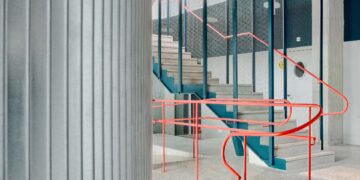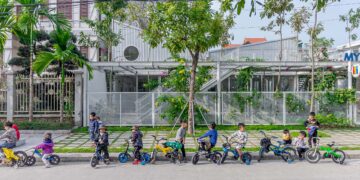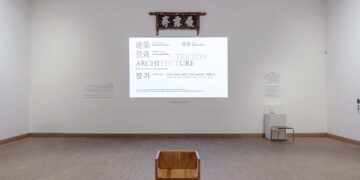Architecture studio Palma designs a calming retreat for a retired couple on the Mexican coast
멕시코 전통 건축, ‘팔파스’에서 열대 기후의 답을 찾은 미니멀한 별장
Palma | 팔마

.
Mexico City and Sayulita-based architecture practice, Palma, was approached by a retired couple looking for a retirement retreat for themselves in the Pacific coastal town of Litibu; their requirements were to turn their cabin on the site into a calming home for themselves, cost-effectively.
Budgetary constraints aside, the architects also needed to maintain a compact spatial arrangement due to size constraints. According to the design team (principals Ilse Cárdenas, Regina De Hoyos, Diego Escamilla and Juan Luis Rivera): “It was important to keep the built surface area very compact and functional”. Likewise, it was important to work with, and capitalize on, the climactic conditions of the area, so looking at local vernacular architecture was key. Palpas – a typical Mexican construction with a thatched, palm-leaf roof – being one of the main inspirations.
멕시코의 태평양 해변 마을 리티부에 작은 오두막집을 은퇴 후 사용할 별장으로 개조한 건물이 있다.
이 마을은 덥고 습한 열대 기후의 영향을 받아 야자수 잎으로 초가지붕을 만드는 멕시코 전통 건축 양식 ‘팔파스’ 가 발달했다. 이 건물 역시 기후에 맞게 집을 고치는 데 팔파스를 적용해 지붕을 높게 세웠다. 방갈로 같은 모습으로 휴가를 떠나온 듯한 분위기를 물씬 풍긴다.




.
The resulting building is a 50㎡ bungalow. The bedroom and living space are separated into two volumes with an open patio in between them. The climate was the main driver of the design, high palapa ceilings cover the main spaces, which in turn can open fully towards the outside. Pigmented stucco was used rather than paint to avoid humidity build-up in the walls. Built in concrete interior elements such as the kitchen counter, shelves or lintels are shown on the façade as a playful break to the symmetry of the project.
According to Escamilla: “The design looks to traditional tropical architecture in Mexico…Palapas are used in the living spaces, and are incorporated into a formally contemporary building. We used pigmented stucco to allow the walls to breathe in a climate where paint starts to peel off within the year from humidity. We decided to highlight certain structural or functional elements on the facade such as lintels and shelves”.
Importantly, to keep costs down, much of the planning occurred offsite, in part due to the challenging remoteness of the plot and the lack of water and power at the site during construction. This took its toll on communication but ultimately the project resulted in a minimalist retreat in line with the client’s retirement dreams.






.
예산은 넉넉지 않고 규모가 50m2 밖에 되지 않은 터라 기존 건물의 오밀조밀하게 나뉜 공간과 외벽은 그대로 유지했다.
양쪽에 침실과 거실이 독립된 건물로 자리하고 그 사이는 지붕으로만 연결해 야외 공간으로 사용한다. 높은 팔파스 지붕으로 각 공간을 덮고, 내부에서는 모든 면이 밖으로 열려 바람이 잘 통한다. 싱크대와 선반, 양 건물을 연결하는 지붕 보처럼 붙박이로 짜 넣은 콘크리트 장치들은 대칭적 배치에 재미를 더한다. 중앙에 원형으로 뚫린 지붕은 시간에 따라 다채로운 빛을 담는다.
벽면은 오래되면 칠이 벗겨지는 페인트보다 스타코로 마감해 해안가 습기에 대비했다. 현대에 흔히 쓰이는 벽면과 달리, 창틀과 문은 목재를 써 지붕과 함께 건물의 특징이 되었다.
공사의 상당 부분은 현장이 아닌 다른 곳에서 진행됐다. 예산을 절감하려는 이유도 있지만, 부지가 외진 곳에 있기도 하거니와 물과 전력이 부족하기도 해서다. 그런 점에서 건축가는 건축주와의 소통에 다소 어려움을 겪기도 했으나 최종적으로 건축주의 바람에 딱 맞는 미니멀리즘 별장을 완성했다.


.
Project: Litibú / Location: Litibu, Nayarit, Mexico / Architects: Palma (Ilse Cáredenas, Regina de Hoyos, Diego Escamilla and Juan Luis Rivera) / Surface area: 50m² / Budget: USD 38,000.00 / Completion: 2020.8 / Photography: Luis Young, María Rivera




































